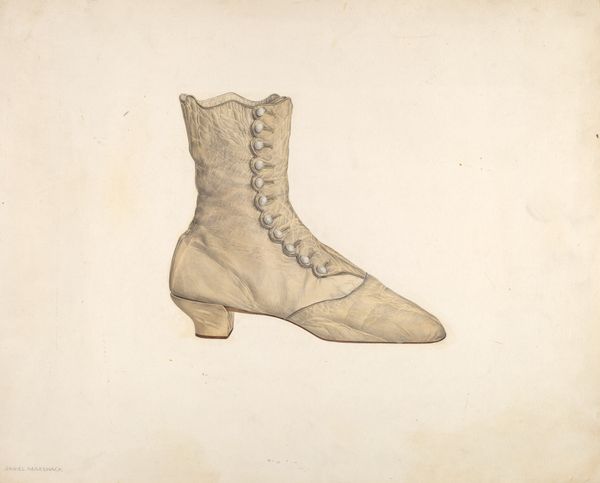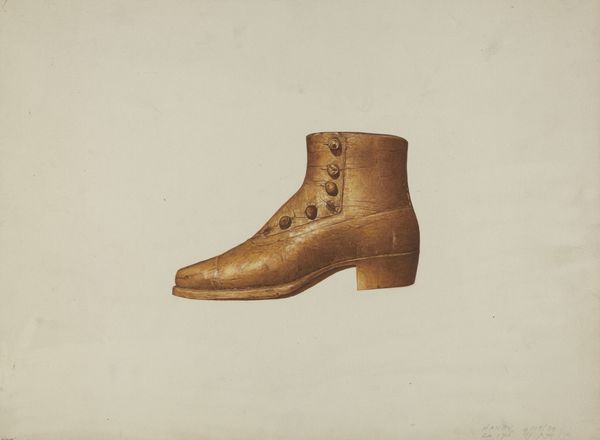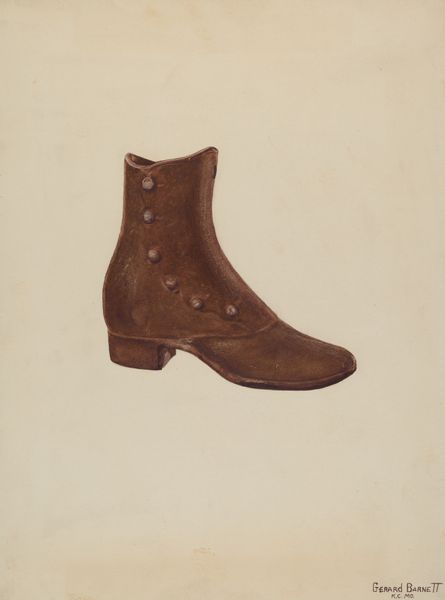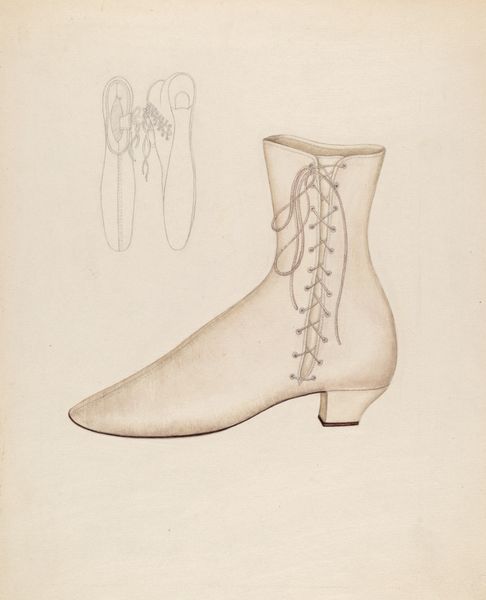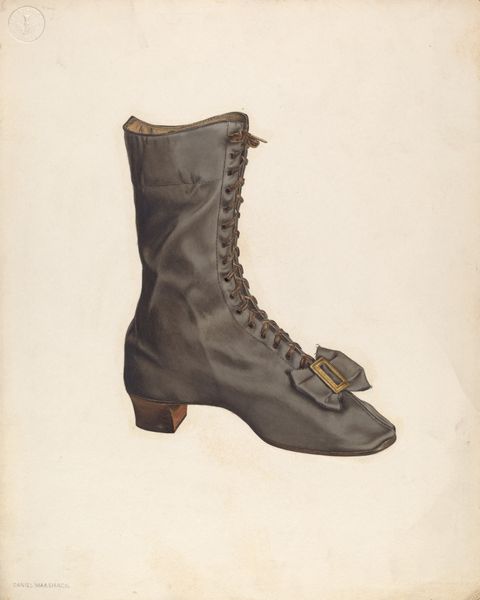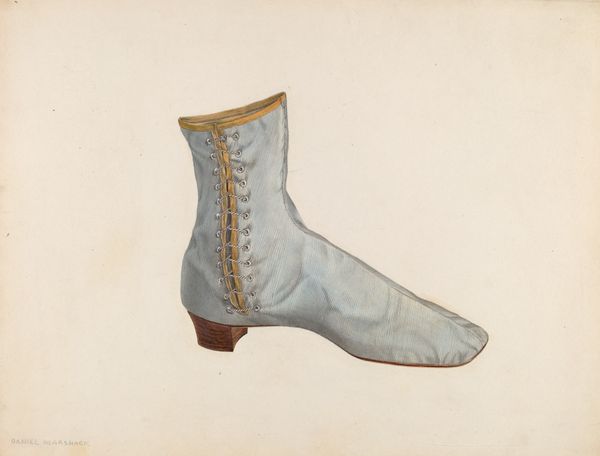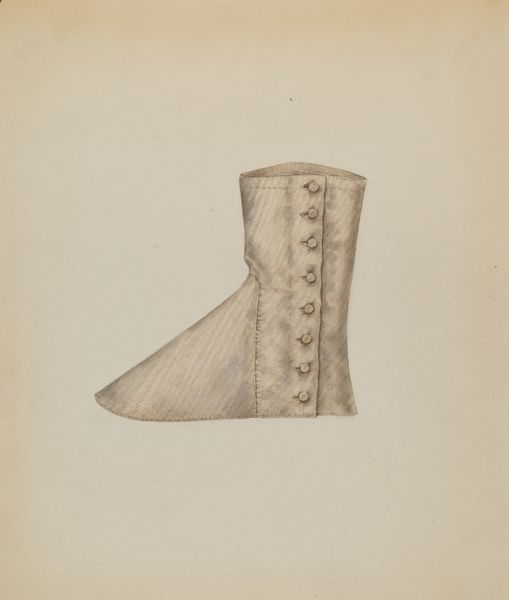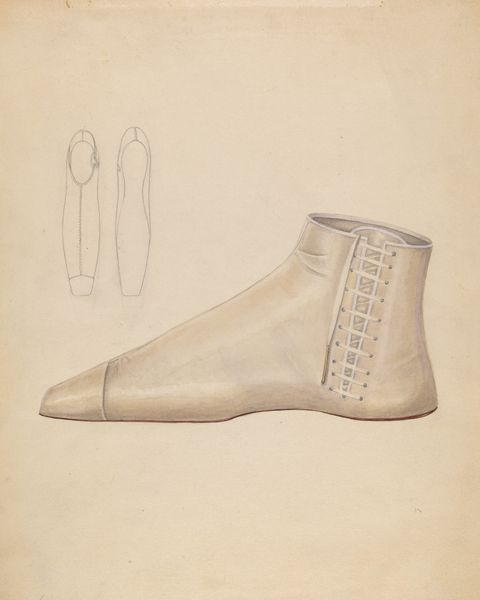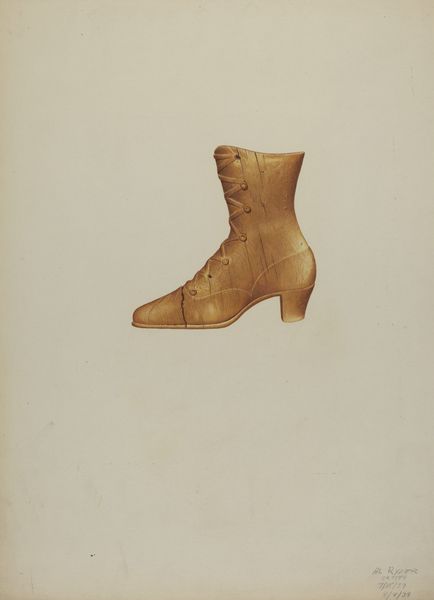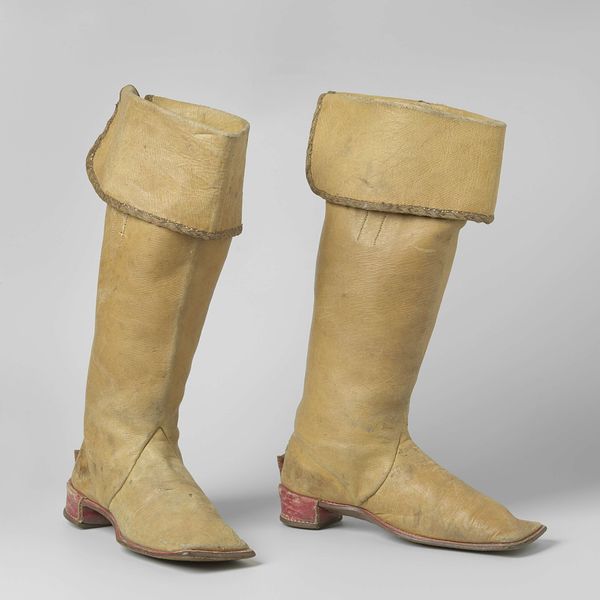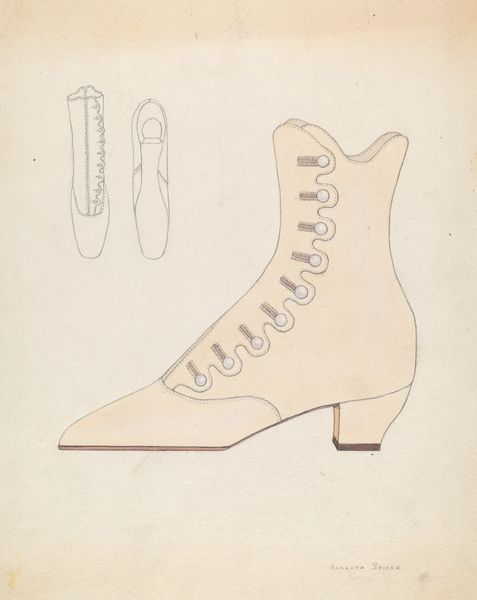
drawing, pencil
#
drawing
#
pencil
#
academic-art
#
watercolor
Dimensions: overall: 24.2 x 21.3 cm (9 1/2 x 8 3/8 in.)
Copyright: National Gallery of Art: CC0 1.0
Curator: This is Fred Hassebrock's drawing entitled "Gaiter," likely created around 1942. It appears to be executed primarily in pencil. Editor: My immediate reaction is its pristine, almost clinical quality. It lacks the overt symbolism or narrative elements we often associate with art during that period. The tight laces almost look painful! Curator: Agreed, it presents itself with remarkable neutrality. However, the socio-political context of the 1940s is critical. Consider the restrictions, the rationing, and the growing societal expectations placed on women during the war. A seemingly innocuous object like this gaiter, drawn with such precision, speaks to the careful attention to personal presentation. Editor: Are you implying it represents resistance, maybe, to those strict social pressures? Curator: Not resistance precisely, more of a negotiation. Women, even amid widespread conflict, were still navigating societal demands about their appearance. Perhaps this drawing represents a subtle expression of maintaining identity and some measure of control in a time of immense upheaval. The whiteness could symbolize purity, virtue, or the roles expected from women. Editor: Interesting. I’m still struck by the rigid lines and the implied constriction. To me it suggests not just social expectation, but also a kind of imprisonment within these expectations. And is it just me, or does it slightly resemble a bandaged foot? Curator: Perhaps an echo of war's wounded bodies? Its aesthetic, so close to academic art, suggests both skill and adherence to traditional methods. How institutions then presented or viewed such work is something worth examining as well. I do agree though. The lace and color call forth notions of confinement. Editor: The history is subtle but profound, and it offers a way to interpret it through the lens of femininity. So often, it's the seemingly mundane objects that carry the weight of their eras' unspoken anxieties and hidden identities. Curator: Yes, looking closely allows the era's subtleties to show themselves, complicating common historical perceptions. Thank you!
Comments
No comments
Be the first to comment and join the conversation on the ultimate creative platform.
